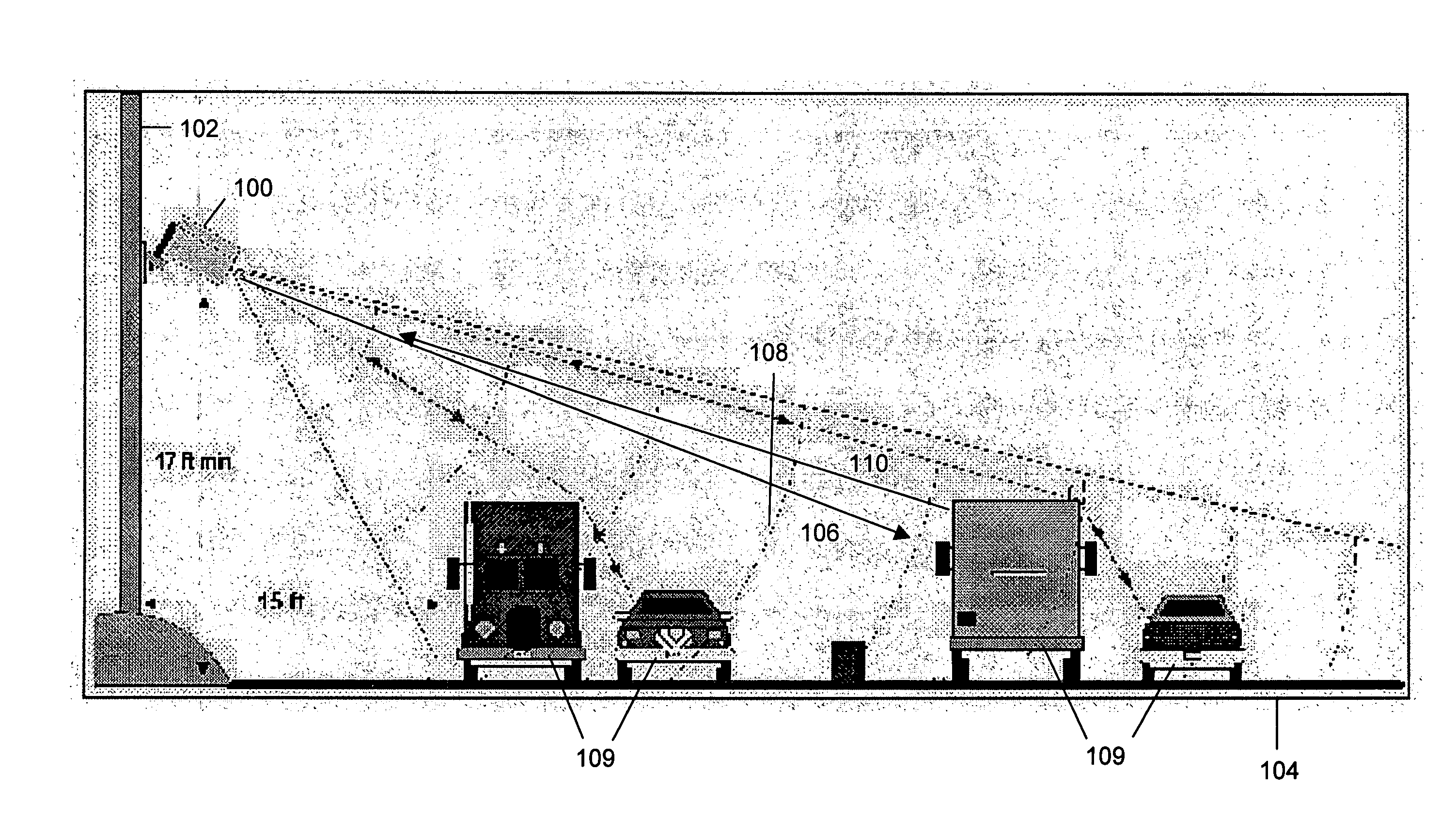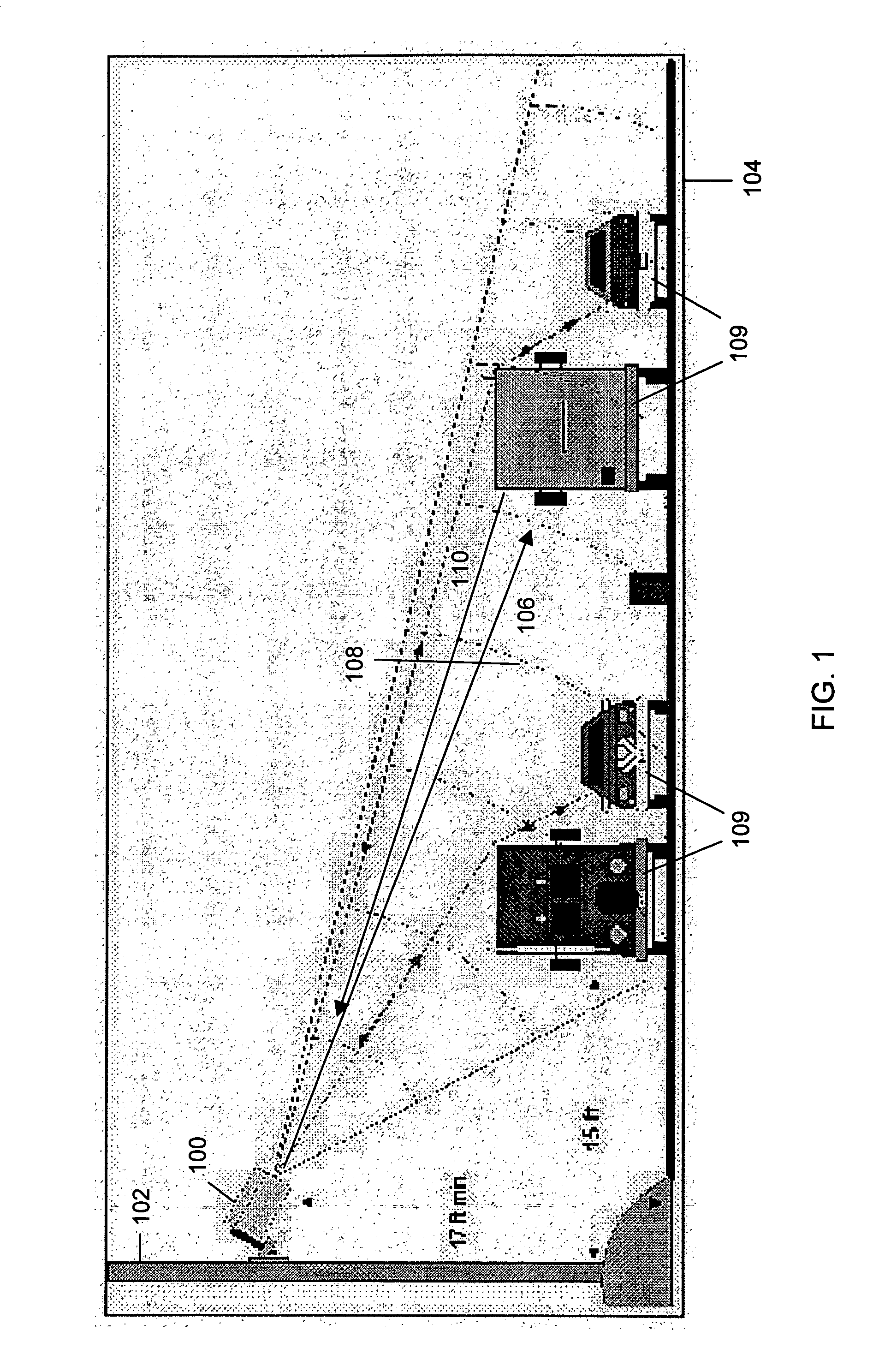Method and apparatus for providing automatic lane calibration in a traffic sensor
- Summary
- Abstract
- Description
- Claims
- Application Information
AI Technical Summary
Problems solved by technology
Method used
Image
Examples
Embodiment Construction
[0015] Referring to FIG. 1, there is illustrated in a schematic view, a sensor 100 in accordance with a preferred aspect of the present invention. The sensor 100 is mounted on a pole 102 in a side-mounted configuration relative to road 104. Sensor 100 transmits a signal 106 through a field of view 108 at the road 104 to “paint” a long elliptical footprint on the road 104. Any non-background targets, such as vehicles 109, reflect a reflected signal Pr 110 having power level P. Specifically, the low-power microwave signal 106 transmitted by sensor 100 has a constantly varying frequency. Based on the frequency of the reflected signal 110, the sensor can determine when the original signal was transmitted, thereby determining the time elapsed and the range to the reflecting object. The range of this reflected object is the “r” in Pr.
[0016] Referring to FIG. 2, the components of the sensor 100 are illustrated in a block diagram. As shown, the sensor 100 comprises an antenna board 114 for...
PUM
 Login to View More
Login to View More Abstract
Description
Claims
Application Information
 Login to View More
Login to View More - R&D Engineer
- R&D Manager
- IP Professional
- Industry Leading Data Capabilities
- Powerful AI technology
- Patent DNA Extraction
Browse by: Latest US Patents, China's latest patents, Technical Efficacy Thesaurus, Application Domain, Technology Topic, Popular Technical Reports.
© 2024 PatSnap. All rights reserved.Legal|Privacy policy|Modern Slavery Act Transparency Statement|Sitemap|About US| Contact US: help@patsnap.com










